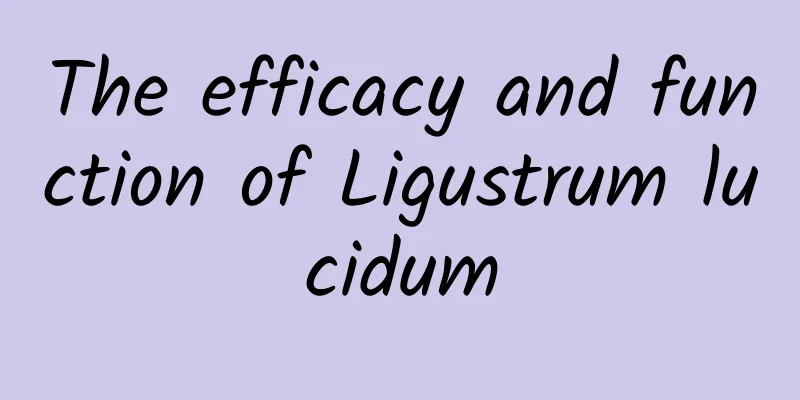The efficacy and function of mountain jute leaves

|
We can often see mountain jute leaves in daily life, so how should we eat mountain jute leaves? What good effects do they have on our body? Let's take a look. [Source] Medicinal material source: The leaves of the plant Glehnia littoralis of the Ulmaceae family. [Original morphology] Small tree, 4-8m tall, with branches of the current year densely covered with white, spreading, soft hairs. Leaves are alternate; petiole is 4-12mm long, densely covered with white soft hairs; leaf blade is papery, ovate-lanceolate or lanceolate, 6-18cm long, 3-8cm wide, with long and gradually pointed apex, cordate or nearly truncate base, often slightly oblique, with short stiff hairs and roughness on the upper side, densely covered with silver-gray silky soft hairs or curved soft hairs on the lower side, with fine serrations on the margin; 3 veins at the base, 5-6 pairs of lateral veins, obvious reticulate veins, flowers are unisexual, dioecious, and the cymes are dense, slightly longer than the petiole; calyx is deeply 5-lobed, with hairs on the back; 5 stamens, opposite to the sepals; male flowers are about 1mm long, and female flowers are about 2mm long; ovary has 1 chamber, stigmas are 2, and covered with hairs. The drupe is ovoid, with a stalk 2-3mm long and hairy. The flowering period is from May to June, and the fruiting period is from June to August. [Habitat distribution] Ecological environment: Grown in sparse forests at an altitude of about 800m. [Properties] Identification of properties: The leaves are mostly wrinkled, and when flattened, the intact ones are ovate, ovate-lanceolate or lanceolate, 6-18cm long, with acuminate tip, cordate or nearly truncated base, often slightly oblique, with obvious 3 veins at the base, small serrations on the edges, short and rough hairs on the upper side, and densely covered with light yellow soft hairs on the lower side. Crisp texture. Slight smell, bitter taste. 【Nature and flavor】 Astringent; neutral 【Functions and indications】Hemostasis. Major trauma bleeding 【Usage and Dosage】 For external use: appropriate amount, crush the fresh product and apply; or grind it into powder and apply. 【Excerpt】 Chinese Materia Medica Through the introduction in the above article, I believe everyone has a certain understanding of mountain jute leaves. This is a medicinal material we are very familiar with, but it has many medicinal properties and functions. Therefore, I hope everyone will consume it based on their own situation. |
<<: The efficacy and function of boxwood
>>: The efficacy and function of Artemisia
Recommend
Side effects of Ma Ren Wan
The hot summer can easily cause food to spoil, an...
Should blood pressure be measured on the left or right hand? Why might blood pressure in both arms be different?
Measuring blood pressure is a very important part...
Should the word "Fu" be pasted upside down? How much do you know about Spring Festival couplets and the word "Fu"?
Tomorrow is the Little New Year. The Spring Festi...
The efficacy and function of Patrinia
There are many medicines in life, and different m...
National Love Teeth Day丨How far are we from dental implant freedom?
Jointly produced by: Sina News Photo and Data Roo...
The efficacy and function of evergreen grass
When it comes to evergreen grass, we are all fami...
Today, let us pay tribute to them together!
END Tadpole five-line score original work, please...
The efficacy and function of forest ginseng
Among traditional Chinese medicinal materials, ma...
Can wolfberry be consumed for a long time?
Wolfberry is cheap and nutritious, making it an e...
Rare lunar "soil": exploring the extraordinary value of lunar soil
Chang'e 6 returned triumphantly, bringing bac...
The "anti-aging timetable" is here! People who often do this will really be younger
The same 24 hours a day, almost the same three me...
Olympic champion Quan Hongchan couldn't refuse it! Why is the "turtle vs. turtle" so popular?
Recently, Quan Hongchan, who just returned from w...
The efficacy and function of water hemp tiao
Modern medical research believes that water hemp ...
Remember the rhino monster in Journey to the West? The Ice Age really existed!
In the vast river of evolution The rhino family h...
What are the medicinal properties of saffron
Saffron is a plant that originates from abroad. I...









